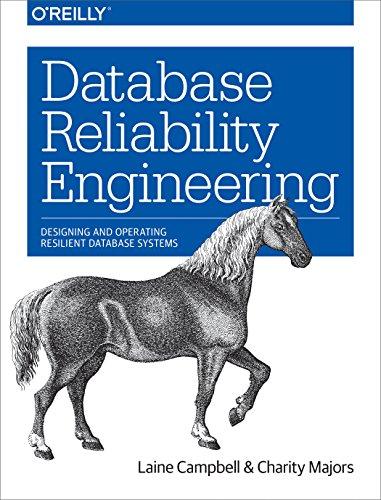Question
write a pseudo-code for this java code // Java program to solve Traveling Salesman Problem // using Branch and Bound. import java.util.*; class GFG {
write a pseudo-code for this java code
// Java program to solve Traveling Salesman Problem // using Branch and Bound. import java.util.*;
class GFG { static int N = 4;
// final_path[] stores the final solution ie, the // path of the salesman. static int final_path[] = new int[N + 1];
// visited[] keeps track of the already visited nodes // in a particular path static boolean visited[] = new boolean[N];
// Stores the final minimum weight of shortest tour. static int final_res = Integer.MAX_VALUE;
// Function to copy temporary solution to // the final solution static void copyToFinal(int curr_path[]) { for (int i = 0; i < N; i++) final_path[i] = curr_path[i]; final_path[N] = curr_path[0]; }
// Function to find the minimum edge cost // having an end at the vertex i static int firstMin(int adj[][], int i) { int min = Integer.MAX_VALUE; for (int k = 0; k < N; k++) if (adj[i][k] < min && i != k) min = adj[i][k]; return min; }
// function to find the second minimum edge cost // having an end at the vertex i static int secondMin(int adj[][], int i) { int first = Integer.MAX_VALUE, second = Integer.MAX_VALUE; for (int j=0; j if (adj[i][j] <= first) { second = first; first = adj[i][j]; } else if (adj[i][j] <= second && adj[i][j] != first) second = adj[i][j]; } return second; } // function that takes as arguments: // curr_bound -> lower bound of the root node // curr_weight-> stores the weight of the path so far // level-> current level while moving in the search // space tree // curr_path[] -> where the solution is being stored which // would later be copied to final_path[] static void TSPRec(int adj[][], int curr_bound, int curr_weight, int level, int curr_path[]) { // base case is when we have reached level N which // means we have covered all the nodes once if (level == N) { // check if there is an edge from last vertex in // path back to the first vertex if (adj[curr_path[level - 1]][curr_path[0]] != 0) { // curr_res has the total weight of the // solution we got int curr_res = curr_weight + adj[curr_path[level-1]][curr_path[0]]; // Update final result and final path if // current result is better. if (curr_res < final_res) { copyToFinal(curr_path); final_res = curr_res; } } return; } // for any other level iterate for all vertices to // build the search space tree recursively for (int i = 0; i < N; i++) { // Consider next vertex if it is not same (diagonal // entry in adjacency matrix and not visited // already) if (adj[curr_path[level-1]][i] != 0 && visited[i] == false) { int temp = curr_bound; curr_weight += adj[curr_path[level - 1]][i]; // different computation of curr_bound for // level 2 from the other levels if (level==1) curr_bound -= ((firstMin(adj, curr_path[level - 1]) + firstMin(adj, i))/2); else curr_bound -= ((secondMin(adj, curr_path[level - 1]) + firstMin(adj, i))/2); // curr_bound + curr_weight is the actual lower bound // for the node that we have arrived on // If current lower bound < final_res, we need to explore // the node further if (curr_bound + curr_weight < final_res) { curr_path[level] = i; visited[i] = true; // call TSPRec for the next level TSPRec(adj, curr_bound, curr_weight, level + 1, curr_path); } // Else we have to prune the node by resetting // all changes to curr_weight and curr_bound curr_weight -= adj[curr_path[level-1]][i]; curr_bound = temp; // Also reset the visited array Arrays.fill(visited,false); for (int j = 0; j <= level - 1; j++) visited[curr_path[j]] = true; } } } // This function sets up final_path[] static void TSP(int adj[][]) { int curr_path[] = new int[N + 1]; // Calculate initial lower bound for the root node // using the formula 1/2 * (sum of first min + // second min) for all edges. // Also initialize the curr_path and visited array int curr_bound = 0; Arrays.fill(curr_path, -1); Arrays.fill(visited, false); // Compute initial bound for (int i = 0; i < N; i++) curr_bound += (firstMin(adj, i) + secondMin(adj, i)); // Rounding off the lower bound to an integer curr_bound = (curr_bound==1)? curr_bound/2 + 1 : curr_bound/2; // We start at vertex 1 so the first vertex // in curr_path[] is 0 visited[0] = true; curr_path[0] = 0; // Call to TSPRec for curr_weight equal to // 0 and level 1 TSPRec(adj, curr_bound, 0, 1, curr_path); } // Driver code public static void main(String[] args) { //Adjacency matrix for the given graph int adj[][] = {{0, 10, 15, 20}, {10, 0, 35, 25}, {15, 35, 0, 30}, {20, 25, 30, 0} }; TSP(adj); System.out.printf("Minimum cost : %d ", final_res); System.out.printf("Path Taken : "); for (int i = 0; i <= N; i++) { System.out.printf("%d ", final_path[i]); } } }
Step by Step Solution
There are 3 Steps involved in it
Step: 1

Get Instant Access to Expert-Tailored Solutions
See step-by-step solutions with expert insights and AI powered tools for academic success
Step: 2

Step: 3

Ace Your Homework with AI
Get the answers you need in no time with our AI-driven, step-by-step assistance
Get Started


